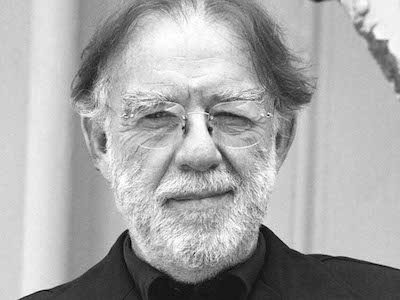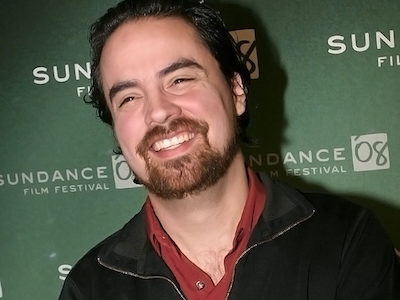Godfrey Reggio is an activist, philosopher and filmmaker known for creating poetic images of extraordinary environmental impact. He is the director of Koyaanisqatsi, Powaqqatsi and Naqoyqatsi, a trilogy of stunningly photographed and transfixing films, with music composed by renowned composer Philip Glass, that document the relationship between humans and nature, and the destructive impact of the modern world on the environment.
He is a frequent lecturer on philosophy, technology, and film.
Visitors, his latest film, has been described as revealing “humanity’s trancelike relationship with technology, which, when commandeered by extreme emotional states, produces massive effects far beyond the human species.” Like the Qatsi trilogy, it is accompanied by instrumentals composed by Reggio’s collaborator Philip Glass.
As an activist, Godfrey Reggio has devoted himself to service to the environment, youth, street gangs and the poor. Early in his life, Reggio spent 14 years in silence and prayer while studying to be a monk. In 1963, he co-founded Young Citizens for Action, a community organization project that aided juvenile street gangs. Following this, Reggio co-founded La Clinica de la Gente, a facility that provided medical care to 12,000 community members in Santa Fe, and La Gente, a community-organizing project in Northern New Mexico’s barrios. He co-founded the Institute for Regional Education in Santa Fe, a non-profit foundation focused on media development, the arts, community organization, and research. With funding from the American Civil Liberties Union, Reggio co-organized a multi-media public interest campaign on the invasion of privacy and the use of technology to control behavior in 1974. Reggio developed a new school of exploration and production in the arts, technology, and mass media, founded by the Benetton company. Called Fabrica-Futuro Presente, it opened in May 1995, in Treviso, Italy, just outside Venice. While serving as the initial director of the school, Reggio co-authored the 7-minute film Evidence (1995) that provides another point of view to observe the subtle but profound effects of modern living on children.
Koyaanisqatsi (1983), Reggio’s debut as a film director and producer, is the first film of the QATSI trilogy. The title is a Hopi word meaning “life out of balance.” The film is an apocalyptic vision of the collision of two different worlds–urban life and technology versus the environment. Powaqqatsi (1988), Reggio’s second film, conveys a humanist philosophy about the earth, the encroachment of technology on nature and ancient cultures, and the splendor that disappears as a result. The film focuses on the so-called modern way of life and the concept of the Global Village, entwining the distinctive textures of ancient and so-called Third World cultures. Anima Mundi (1992), a film commissioned for the World Wide Fund for Nature, which used the film for its Biological Diversity Program, is a montage of intimate images of over seventy animal species that celebrates the magnificence and variety of the world’s fauna. Naqoyqatsi (2002), the final film of the QATSI trilogy, chronicles the the transition, over the last five thousand years, from “old nature, the natural milieu, to the “new” nature, the technological milieu.
__




